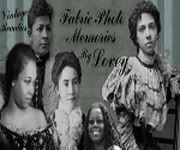

Our story starts when “Madame” was just 19, and plucked from a crowd by
the Czar and declared the most beautiful girl at a ball. Back then she
was just Hanna Puacz, your run-of-the-mill Polish gal from a humble
family. But when she caught the Czar’s eye, he immortalised her beauty
in a commissioned portrait:

She was the perfect cocktail of charisma, beauty, and wit, and quickly rose to the top of society with a new name: Madame Ganna Walska. “Madame”
in reference to her budding opera career, “Ganna” as a variation of
“Hanna,” and “Walska” because, well, it sounded like “waltz” and she
just loved to dance.
She collected plants, and husbands. You could say the plants stuck
around longer. Madame accepted numerous marriage proposals and
in total had six husbands, including a Russian count, a yogi, a playboy
conman and the inventor of an electromagnetic “death ray”.When she wasn’t playing ‘femme fatale’ and enjoying the high life that her first marriage had introduced her to, a good chunk of her time was spent in pursuit of a career as an opera singer.
The only problem was– Madame Walska couldn’t sing– or at least, if she
could, no one was aware of her talent due to a crippling case of stage
fright. In 1918, she performed in the Italian opera Fedora
before an audience in Havana, Cuba which included fashion designer Elsa
Schiaparelli. The reception of the performance is described in the
designer’s biography:
In 1925, The New York Times headlines of the day read, “Ganna Walska Fails as Butterfly: Voice Deserts Her Again When She Essays Role of Puccini’s Heroine” (January 29, 1925). Ganna’s fourth husband, Harold McCormick played a vital role in continuing to promote her career, and his promotion was so adament, in fact, that it inspired much of the screenplay for Orson Welles’ Citizen Kane, in which the mysterious tycoon loses all his power and instead focuses his energies on his wife’s hopeless opera career.
Dorothy Comingore as Susan Alexander in the film "Citizen Kane,"
directed by Orson Welles, 1941, photo: © 1941 RKO Radio Pictures, Inc.

“Love comes and goes on its own accord, like a fever,” Madame once said, “Nothing can stop it, nothing can prolong it either…My reputation was entirely my own creation for self-defense… I was considered to be an exceptionally level-headed woman, a thousand-headed monster, a hard working machine.”

Madame became quite a fixture on the Parisian society scene, and for a
brief spell, had a go at launching her own Parisian cosmetics line. She was heartbroken when the impending First World War forced her to leave Paris for America.

But it was in America that she would find would finally find her calling
and begin to shift herself out of the media spotlight that left her
exposed to public ridicule and tabloid punchlines

In 1941, she bought her Santa Barbara estate from the herbology-obsessed Gavits family, who paved the way for her whimsical embellishments with their dramatic, Italianite landscaping. With the encouragement of her last husband, a yogi known as “White Lama,” she put her energy into what would soon be known as Lotusland, her true creative chef d’oeuvre.

Ever the francophile, she installed a number of the statues brought over
from her French chateau, but it was also important for her to weave in
elements of her Buddhist religion into the garden. Upon purchase she
actually intended to turn it into a monastery called, “Tibetland,” but
in the wake of WWII, the US government refused visas to the mountain
monks she had hoped to bring over.

One of the gardens is dedicated to lily pads and lotuses, the latter of
which give the estate its namesake. The aquatic flower symbolises
personal growth and strength in Buddhist tradition, two qualities that
would prove very important to Madame.
Madame took many cues from the park “follies” structures popular during Paris’ Belle Epoque, like
the tremendous astrological clock surrounded by topiary beasts. She
proudly dabbled in telepathy, the zodiac, and was also a big fan of
Ouija boards. (For what it’s worth, her sign was Cancer.)
Then there’s the Water Garden, with its aquamarine pool and giant clam fountains of her own design:


There’s also a formal theatre garden made up of rows of hedges and
populated by a collection of 17th century stone figures called
“grotesques.” They’re dwarfish characters from plays by the likes of
Molière, and carved by the French artist Jacques Callot. They also tend
to pop up out of no where…

Tremendous shards of blue-green glass emerge from the paths like
emeralds, which Madame called jewellery for her garden and salvaged from
an LA glass manufacturer. “She was wealthy,” confided a friend to a journalist, “but she was
always thrifty, no matter how successful she became.”

The peripherary of the Japanese Garden teases you with stone lanterns called “Ishi-Dōrō” for as far as the eyes can see…

The Insectary Garden is home to butterflies, a tremendous copper cage
with doves, and a far-reaching trellis of lemons that Madame called her
“Victory Garden,” which was planted for the veterans of WWII. Today,
its harvest serves certain food banks of Southern California.

For the most part, her elegant wardrobe, from her costumes to
self-titled “Ganna Walska” perfume, are stored in Los Angeles. She had
an excellent eye for both costume design (although the talents of Erté
and Lanvin helped a lot).

But every once in a while her treasures make an appearance at the old Montecito estate…

She loved grand entrances. Each pathway was meant to feel
dramatic, with its rows of agave or palms…her motto was the French
phrase malgré tout, “in spite of everything,” because she’d been through so much in love, death, and war over the years.

And just as you begin to feel lost in what feels like a very chic
Jumanji, you’ll reach the pink main house. It’s at the heart of the
garden, and meant to transport you to the sun-baked hills of Mexico…



Not much has changed today, and one type of cactus at its feet is
actually extinct in its native Mexico. But that story isn’t uncommon at
Lotusland, which has become one of the world’s most precious sanctuaries
for rare plants.

In fact, it’s one of the only places in the world where so many
dangerous breeds can be at home. “The U.S. federal government,” says
Gress, “has made it one of few holding grounds for plant contraband”
(yes, that’s a thing). It’s a kingdom of exotic misfits, with the spirit
of the most colourful and resilient of them all, Madame, at its helm.

When all was said and done, you could say that Lotusland was the true
love of Madame’s life, and she lived until the age of 96 in the company
of her 3000 darlings (aka plant varieties). One of her last grand
gestures to the estate was the auctioning off of $1 million worth of her
jewellery in the 1970s in order to finance the installation of (you
guessed it) a garden of 500 cycads.
Luckily for us, Madame bequeathed the gardens to the public upon her death, and you can make a reservation to visit it here

Now, go make something beautiful!
¸.•´
¸.•*´¨) ¸.•*´¨)(¸.•´
(¸.•´♥ Tristan ♥
(¸.•´♥ Tristan ♥
Dorothy Comingore in "Citizen Kane" playing Susan Alexander a thinly
disguised portrait of Madame Ganna Walska























































































5 comments:
I wonder if the novelty wears off.
Montecito is magical in so many ways. One of our favorite spots is Butterfly Lane. A dirt walking path that leads to the ocean. It is lined with magnificent, whimsical, opulent homes. I always feel transported when I am there. I adore her comment that she is an enemy of the average! Thanks for sharing this Tristan.
Tristan, you dig up the best stuff and the most remarkable illustrations and research. You must spend hours doing this but I, for one, really appreciate it. What a fascinating story. Just a run of the mill Polish girl!
This was fascinating, Tristan. Wouldn't it be wonderful to visit?
Happy Pink Saturday. This post is being featured on my Pink Saturday post this week as "the one with the most clicks".♥
Next visit to Ca. might have to include a special out of the way trip to here. How Fabulous Tristan! Thanks for finding and sharing the "best stuff" !!
Jackie xo
Post a Comment